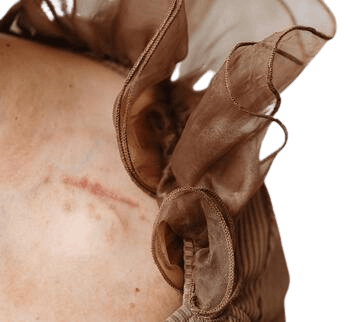
At Dr. James Dsilva' Clinic, we provide a range of scar removal techniques that produce observably better cosmetic results. The way these cosmetic procedures treat scars and the kinds of scars they treat differ. A combined strategy involving several treatment techniques is frequently necessary for scars. This works for scars that are complicated and have special qualities that are impossible to treat with conventional unidimensional techniques.
Anaesthesia will be administered; however, it may be topical or injectable, contingent on the necessary course of treatment. Topical anaesthesia is most frequently used for superficial or non-invasive procedures, however local or even general anaesthesia may be utilised for surgical scar revision.
Dr. James Dsilva will go over your medical history, take into account any particulars of the nature and location of your scar, and create a personalised treatment plan during your appointment for scar revision.
Types of Scars treated at Dr. James Dsilva’ Scar Treatment Clinic
- Acne Scars
- Hypertrophic Scars
- Keloid Scars
- Atrophic Scars
- Chickenpox Scars
- Post-Surgery Scars
What is Microneedling?
Microneedling can be an effective treatment for scar removal, particularly for acne scars, surgical scars, and other types of atrophic scars (scars that are depressed below the skin's surface).
Discolouration and textural variations in scar tissue can be normalised by microneedling, a very successful non-invasive scar correction procedure. Patients who want a non-invasive method or whose scars aren't bad enough to require surgical scar revision frequently choose this kind of scar revision.
Microneedling is a very controlled and accurate cosmetic therapy, much as fractional nonablated laser treatment. With this kind of scar remodelling, different skin segments can be treated without worrying about merging in with untreated areas. For varying degrees of aggression, there are multiple microneedling settings available. Usually, several sessions are required to achieve the desired outcomes from this scar treatment.
Types of Scars that Respond Well to Microneedling
Atrophic acne scars: These are the most common type of scar that responds well to microneedling. They appear as small pits or depressions in the skin.
Surgical scars: Microneedling can help to reduce the redness, discoloration, and texture irregularities of surgical scars.
Stretch marks: While microneedling may not completely eliminate stretch marks, it can help to improve their appearance by stimulating collagen production and improving skin texture.
Benefits of using Microneedling for Scar Removal
Collagen Stimulation: Microneedling creates tiny punctures in the skin, which triggers the body's natural healing response. This process stimulates the production of collagen, a protein that gives the skin its structure and elasticity. The new collagen helps to fill in the depressed areas of the scar, making it less noticeable.
Improved Blood Flow: The micro-injuries created by microneedling also increase blood flow to the area. This increased blood flow helps to deliver nutrients and oxygen to the skin, which can further promote healing and collagen production.
Skin Texture Improvement: Microneedling can help to improve the overall texture of the skin, making it smoother and more even. This can be especially beneficial for acne scars, which can often leave the skin with a pitted or bumpy appearance.
Important Considerations
Not all scars respond equally: The effectiveness of microneedling for scar removal can vary depending on the type of scar, its severity, and your individual skin type.
Multiple sessions may be needed: It usually takes multiple sessions of microneedling to see significant improvement in the appearance of scars. . Results may not be permanent: The results of microneedling are typically not permanent, and you may need to undergo maintenance treatments to maintain the results.
Potential side effects: Microneedling can cause temporary side effects such as redness, swelling, and bruising. There is also a small risk of infection.